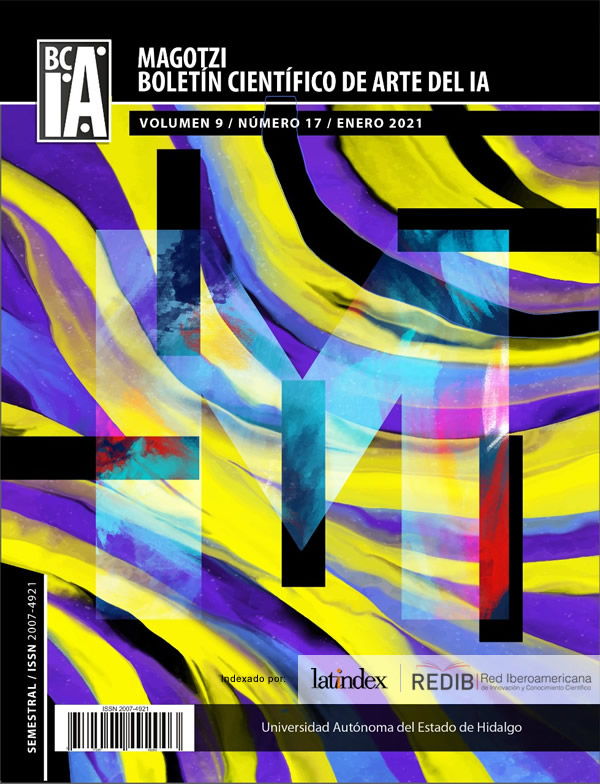New sounds in music education: University voices in face of the COVID-19 pandemic
Abstract
This work presents an approach to the perceptions of students and teachers from an undergraduate music education community in the context of the COVID-19 pandemic. This exploratory study puts on the table of dialogue the understanding of the phenomenon from the own voice of its actors, to analyze the possibilities of transformation of an educational model based on closeness and personal contact that seemed not to be necessary to put in doubt. The results sketch a first real-time image of the reception of the Emerging Distance Education Program (PEED), that was implemented in a Mexican university, which will be available for further studies that can be read from the history of the present time.
Downloads
References
Aguirre-Lora, M.-E. y Márquez-Carrillo, J. (2016). Historia e historiografía de la educación en México, 2002-2011: vicisitudes de un territorio abierto. En M. E. Aguirre-Lora. Historia e historiografía de la educación en México: hacia un balance, 2002-2011, I. 35-60. Ciudad de México: Anuies / Consejo Mexicano de Investigación Educativa.
Ámbito Académico (2020). Plataforma Virtual Moodle. Universidad Autónoma de Aguascalientes. Recuperado de: https://ambitoacademico.uaa.mx
Arias-Gómez, D. H. (2015). La enseñanza de la historia reciente y la formación moral. Dilemas de un vínculo imprescindible. En Folios, Segunda época 42, pp. 29-41. Recuperado de: http://www.scielo.org.co/pdf/folios/n42/n42a03.pdf
Aróstegui-Sánchez, J. (2004). La historia del presente. ¿Una cuestión de método? En Navajas Zubeldia, C. (ed.), Actas de IV Simposio de Historia Actual. pp. 17-19 de octubre de 2002. Logroño: Gobierno de La Rioja. Instituto de Estudios Riojanos, pp. 41-75. Recuperado de: https://dialnet.unirioja.es/servlet/articulo?codigo=1036594
Capistrán-Gracia, R. W. (2018). El portafolio electrónico como instrumento de evaluación y como estrategia de autorregulación en la formación de profesionales en música. En Revista Educación, 42(2). Universidad de Costa Rica. DOI: https://doi.org/10.15517/revedu.v42i2.25937
De la Garza-Toledo, E. & Leyva, G. (2012). Tratado de Metodología de las Ciencias Sociales: Perspectivas actuales. Ciudad de México: Fondo de Cultura Económica.
Fazio-Vengoa, H. (1998). La historia del tiempo presente: una historia en construcción. Historia Crítica, 17, pp. 47-57. Bogotá: Universidad de Los Andes. Recuperado de: https://www.redalyc.org/pdf/811/81111329004.pdf
Franco, M. & Levín, F. (2007). El pasado cercano en clave historiográfica. En Franco, M. & Levín, F. (Comp.). Perspectivas y desafíos para un campo en construcción. Buenos Aires: Paidós. Recuperado de: http://files.pluriversidad-oikologias.webnode.es/200000019-2c6502d5e4/2013%20CAPACITACION%20PRSENCIAL%20FRANCO%20LEVIN.pdf
Garfinkel, H. (2006). Estudios en Etnometodología. Barcelona: Anthropos/ UNAM.
López, M.; Figueroa, C. y Rajland, B. (Ed.). (2010). Temas y procesos de la historia reciente de América Latina. Santiago de Chile: CLASCO/Arcis. Recuperado de: http://biblioteca.clacso.edu.ar/clacso/coediciones/20100827084236/historiarec.pdf
MEI (2006). Modelo Educativo Institucional. Universidad Autónoma de Aguascalientes. Recuperado de: https://www.uaa.mx/principal/pdf/modeloeducativo.pdf
PEED (2020). Programa Emergente de Educación a Distancia. Boletín 144. Universidad Autónoma de Aguascalientes. Recuperado de: https://www.uaa.mx/portal/pdf-entradas/?post_id=17418
Soto-Gamboa, A. (2004). Historia del presente: estado de la cuestión y conceptualización. En Historia Actual Online, 3, pp. 101-116. Asociación de Historia Actual. Área de Historia Contemporánea. Cádiz: Facultad de Filosofía y Letras, Universidad de Cádiz. Recuperado de: https://www.historia-actual.org/Publicaciones/index.php/hao/article/view/34












